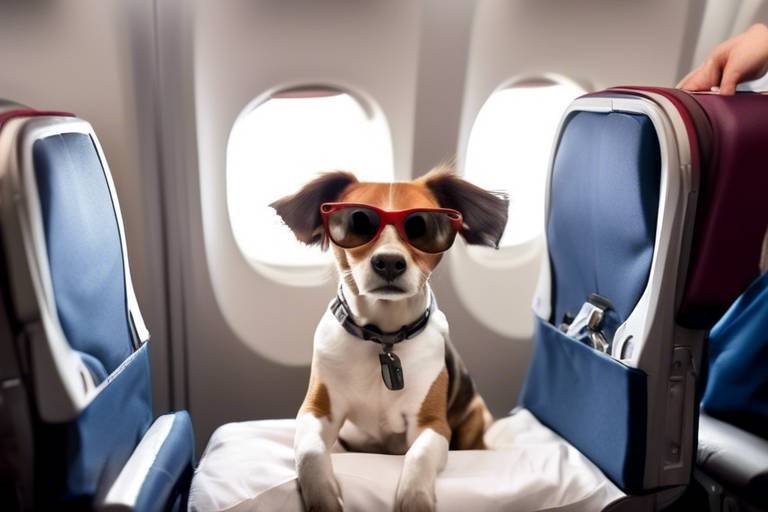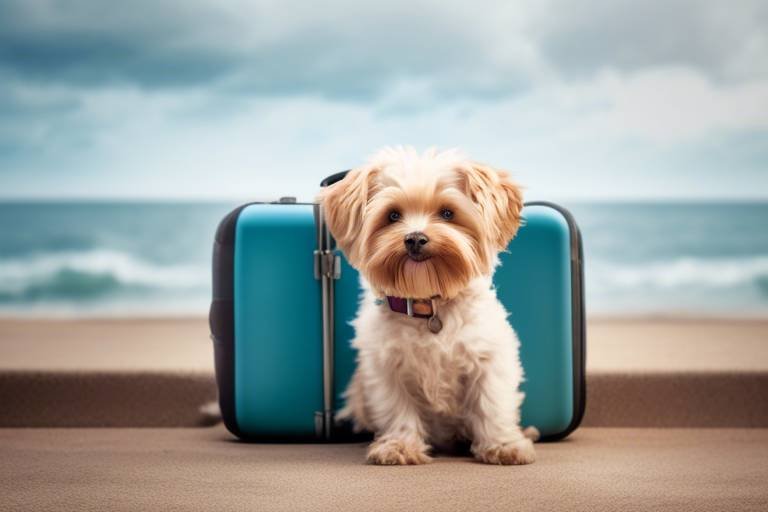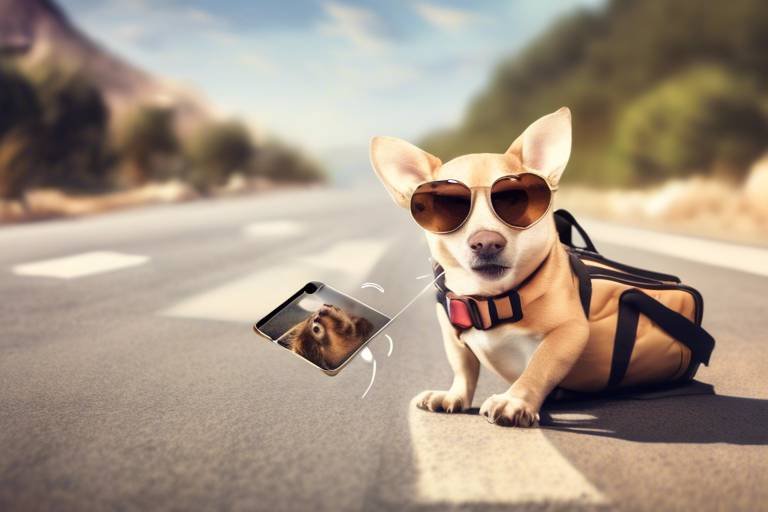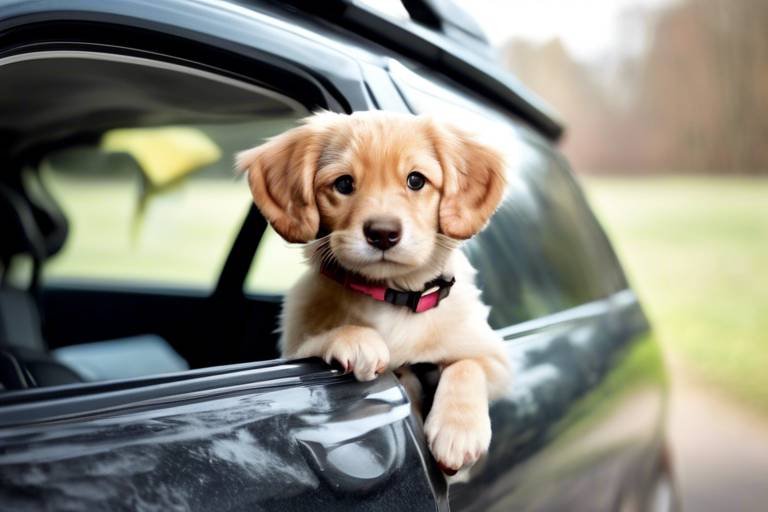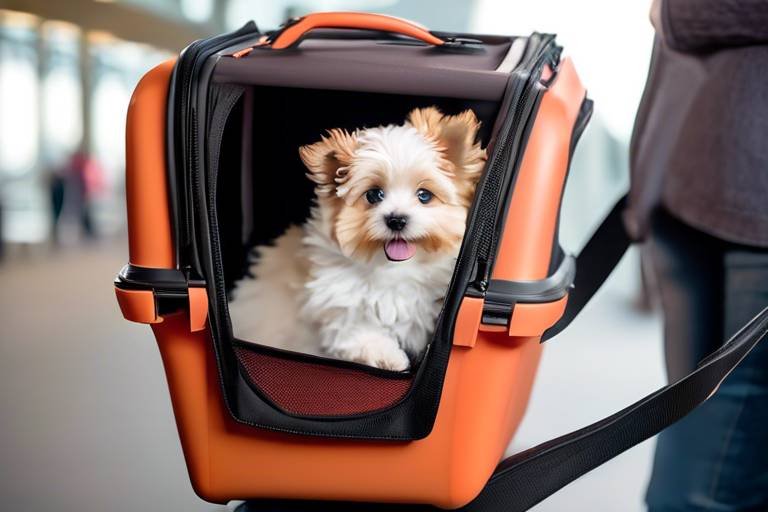How to Keep Your Pet Calm During Long Flights
Traveling with your furry friend can be a delightful adventure, but long flights can also be a source of stress for both pets and their owners. Imagine being confined in a small space, surrounded by unfamiliar sounds and smells; it’s no wonder our pets can feel anxious during air travel. In this article, we will explore essential tips and strategies to ensure your pet remains calm and comfortable throughout the journey. By understanding pet anxiety and preparing adequately, you can transform a potentially stressful experience into a smooth ride for both you and your beloved companion.
Before embarking on a long flight, it's vital to recognize the signs of anxiety in your pet. Just like us, animals can exhibit various behaviors when they're stressed. Common indicators include excessive barking, whining, drooling, or even attempts to escape their carrier. Understanding these signs is the first step in addressing your pet's needs effectively. For instance, if your dog is pacing back and forth, it might be feeling restless and anxious. On the other hand, a cat that hides or refuses to eat could be overwhelmed by the situation. By being observant and proactive, you can help alleviate their anxiety before it escalates.
Preparation is key when it comes to traveling with pets. Start by acclimatizing your pet to their travel carrier well in advance. This means letting them explore the carrier, feeding them treats inside it, and even allowing them to nap in it. The more familiar they are with their space, the less anxious they will feel during the flight. Additionally, consider the following steps to ensure a smooth pre-flight experience:
Selecting an appropriate carrier is crucial for your pet's comfort during the flight. Not all carriers are created equal, and it’s important to choose one that meets airline regulations while also catering to your pet's specific needs. Look for carriers that are spacious enough for your pet to stand, turn around, and lie down comfortably. Additionally, ensure that the carrier has adequate ventilation to keep your pet cool and calm. Remember, a well-chosen carrier can make all the difference in your pet's travel experience.
The size and ventilation of the carrier are vital for your pet's comfort. A cramped space can lead to increased anxiety and discomfort during the flight. To select the right carrier size, measure your pet from the tip of their nose to the base of their tail and from the floor to the top of their head when they are standing. The carrier should be at least a few inches taller and longer than these measurements. Proper ventilation is equally important; look for carriers with mesh panels or vents that allow for airflow. This will help keep your pet cool and prevent overheating.
Familiarizing your pet with the carrier can significantly reduce anxiety. Start by placing the carrier in a common area of your home, allowing your pet to explore it freely. You can also place their favorite blanket or a toy inside to create a sense of security. Gradually increase the time they spend in the carrier, and consider taking short car rides with them in the carrier to simulate travel. This will help them associate the carrier with positive experiences, making them more comfortable during the flight.
Before you travel, it’s wise to consult with a veterinarian. They can provide valuable advice tailored to your pet's specific needs and health concerns. If your pet has a history of anxiety, your vet might recommend calming medications or natural remedies to help soothe their nerves during the flight. A professional opinion can also ensure that your pet is healthy enough for travel, which is paramount for a successful journey.
Once you're in the air, keeping your pet calm requires ongoing attention and care. Make sure to check on them regularly and offer comfort as needed. It’s essential to maintain a calm demeanor yourself, as pets can pick up on their owner's emotions. If you’re feeling anxious, your pet may feel it too. Instead, try to project a sense of calmness and reassurance.
Using calming aids can be a game-changer for anxious pets during flights. Options include:
- Pheromone sprays: These mimic natural calming scents that can help soothe pets.
- Natural treats: Look for treats infused with calming ingredients like chamomile or valerian root.
- Medication: In some cases, your veterinarian may prescribe sedatives to help ease anxiety.
Experiment with these options to find what works best for your pet. Remember, what soothes one pet may not work for another, so be patient and observant.
Keeping your pet comfortable and hydrated during the flight is essential. Make sure to offer water before the flight and consider bringing a travel bowl for in-flight hydration. It's also a good idea to have a favorite blanket or toy on hand to provide a sense of familiarity. If your pet seems restless, gently talk to them and offer reassuring pets to help them relax.
After landing, your pet may need some extra care to help them readjust. Give them time to acclimate to their new surroundings and offer plenty of opportunities for bathroom breaks and hydration. A long flight can be exhausting, so allow them to rest and recover. Gradually introduce them to their new environment, and monitor their behavior for any signs of lingering stress. With a little patience and love, they will soon feel at home again.
Q: Can I give my pet food during the flight?
A: It's generally best to avoid feeding your pet right before the flight to prevent motion sickness. Instead, offer food after landing when they are more settled.
Q: What if my pet is too anxious to travel?
A: If your pet has severe anxiety, consult your veterinarian for advice. They may recommend behavioral training or medication to help ease your pet's stress.
Q: Should I sedate my pet for the flight?
A: Sedation is not always recommended, as it can affect your pet's ability to regulate their body temperature and respond to emergencies. Always consult with your veterinarian before considering sedation.

Understanding Pet Anxiety
When it comes to our beloved furry companions, understanding their emotions is just as important as knowing their favorite treats. Pet anxiety can manifest in various ways, and recognizing these signs is crucial for ensuring a smooth travel experience. Have you ever noticed your pet pacing, whining, or hiding when faced with new situations? These behaviors are often indicators of stress and anxiety, especially when it comes to the unfamiliar environment of air travel.
Common signs of pet anxiety include:
- Excessive barking or meowing: This vocalization can be a cry for help or a signal of distress.
- Destructive behavior: Chewing, scratching, or digging can indicate that your pet is feeling overwhelmed.
- Withdrawal: If your pet is hiding or avoiding interaction, it may be a sign that they are feeling anxious.
- Changes in appetite: A sudden disinterest in food or treats can signal stress.
Understanding these signs allows you to take proactive steps to alleviate your pet's anxiety before and during the flight. For instance, if you notice your pet is particularly restless, it might be time to explore some calming techniques or products. Many pet owners have found success with calming pheromones or even simple distractions like toys or treats that can keep their pets engaged and less focused on their surroundings.
Moreover, anxiety can stem from a variety of factors, including previous negative experiences, changes in routine, or even the unfamiliar sounds and smells associated with travel. It’s essential to assess your pet's unique triggers and develop a tailored approach to keep them calm. Just like humans, pets can benefit from a sense of security and familiarity. Creating a comfortable travel environment and practicing relaxation techniques can make a world of difference.
In summary, understanding pet anxiety is about recognizing the signs and being proactive in addressing them. By paying close attention to your pet's behavior and taking steps to mitigate their stress, you can help ensure that your travel experience is enjoyable for both you and your furry friend. Remember, a calm pet makes for a smoother journey!

Pre-Flight Preparations
Preparing your pet for a flight is not just about packing their favorite toys; it’s a crucial step that can significantly affect their comfort and overall experience during the journey. Just like us, pets can feel anxious when faced with new environments and situations. Therefore, taking the time to acclimatize your furry friend to the travel carrier and ensuring they feel comfortable in the new environment is essential. Here are some key preparatory actions you should consider before the big day.
One of the most critical aspects of pre-flight preparations is selecting the right carrier. This choice can make or break your pet's travel experience. When choosing a carrier, you need to consider several factors:
- Airline Regulations: Each airline has specific requirements regarding pet carriers, including size and ventilation. Make sure to check with your airline before making a purchase.
- Comfort: Your pet should have enough space to stand, turn around, and lie down comfortably. A cramped space can lead to increased anxiety.
- Durability: Look for a sturdy carrier that can withstand the rigors of travel, especially if your pet is prone to scratching or chewing.
By keeping these factors in mind, you can select a carrier that meets both your pet's needs and airline regulations, ensuring a smoother journey.
The size and ventilation of the carrier are vital for your pet's comfort. To choose the right size, measure your pet from the tip of their nose to the base of their tail, and from the ground to the top of their head when standing. This will help you determine the appropriate dimensions for the carrier. A good rule of thumb is to select a carrier that allows for at least three inches of extra space in every direction. Additionally, ensure the carrier has adequate ventilation. Look for carriers with mesh panels or holes that allow for airflow, which is essential for keeping your pet calm and comfortable during the flight.
Familiarizing your pet with the carrier can significantly reduce anxiety. Start by introducing the carrier to your pet well in advance of the flight. Place their favorite blanket or toy inside to create a sense of security. Encourage them to explore the carrier on their own terms. You might also consider using treats to create a positive association with the space. For instance, feed them their meals inside the carrier a few times before the trip. This way, they will start to see it as a safe haven rather than a confinement. Remember, the more comfortable they feel, the less stressed they will be during travel.
Before embarking on your journey, it’s advisable to consult with a veterinarian. A vet can provide valuable insights into your pet's health and any potential issues that could arise during travel. They may recommend specific calming techniques or medications if your pet has a history of anxiety during travel. Additionally, a vet can check for any underlying health problems that could be exacerbated by the stress of flying. Taking this proactive step can make a world of difference for both you and your furry companion.
In conclusion, pre-flight preparations are paramount for ensuring your pet’s comfort and well-being during air travel. By choosing the right carrier, familiarizing your pet with it, and consulting with a veterinarian, you can help mitigate anxiety and create a more enjoyable travel experience.
Q: How early should I start preparing my pet for a flight?
A: Ideally, you should start the preparation process at least a few weeks before your flight. This allows your pet to acclimate to the carrier and reduces anxiety.
Q: What should I do if my pet is extremely anxious about flying?
A: If your pet shows signs of severe anxiety, consult your veterinarian. They may recommend calming aids or medications to help your pet relax during the flight.
Q: Can I take my pet out of the carrier during the flight?
A: Generally, it is not allowed to take your pet out of the carrier during the flight for safety reasons. Make sure they are comfortable in their carrier before boarding.
Q: What if my pet needs to go to the bathroom during the flight?
A: It's best to take your pet for a bathroom break before boarding. If they are in a carrier, they should be trained to hold it for the duration of the flight.
Choosing the Right Carrier
When it comes to flying with your pet, one of the most crucial decisions you'll make is . This isn't just about picking something that looks nice; it's about ensuring your furry friend feels safe and comfortable during the journey. Think of the carrier as your pet's home in the sky. If they feel secure in it, the entire travel experience will be much smoother for both of you. So, what should you consider when selecting the perfect carrier?
First and foremost, you need to be aware of the airline regulations. Each airline has specific guidelines regarding the size and type of carriers allowed in the cabin. Generally, the carrier must fit under the seat in front of you, so measuring your pet and checking the airline's requirements is essential. A good rule of thumb is to choose a carrier that is at least a few inches taller and wider than your pet when they are sitting or lying down. This extra space allows your pet to move around a bit, which can help reduce anxiety.
Next, consider the material of the carrier. Hard-sided carriers offer more protection and stability, while soft-sided carriers can be more comfortable and easier to stow under the seat. If you opt for a soft-sided carrier, make sure it has a sturdy frame to prevent it from collapsing during the flight. Additionally, look for carriers with mesh ventilation panels. Good airflow is essential to keep your pet cool and comfortable, especially during long flights. A well-ventilated carrier can make all the difference in how your pet feels during the journey.
Another important aspect is the accessibility of the carrier. You want a carrier that allows for easy access to your pet, especially if they start to feel anxious. Look for carriers with multiple entry points, such as a top and front opening. This feature not only makes it easier to get your pet in and out but also allows you to comfort them if they start to get stressed during the flight.
Lastly, don't forget about the comfort features. A carrier with a removable and washable pad can provide a familiar and cozy space for your pet. You might also consider adding a favorite blanket or toy to help them feel more at home. Remember, your goal is to create a calming environment for your pet, so any little touch that makes them feel secure can go a long way.
In summary, choosing the right carrier involves a mix of understanding airline regulations, ensuring proper size and ventilation, selecting the right materials, and considering your pet's comfort. By taking the time to choose wisely, you can significantly reduce your pet's anxiety and make the flight a more enjoyable experience for both of you.
Size and Ventilation
When it comes to choosing the right carrier for your pet, size and ventilation are two of the most critical factors you should consider. Imagine being crammed into a tiny space with no fresh air; it’s not just uncomfortable, it’s downright stressful! The right carrier should allow your furry friend to stand, turn around, and lie down comfortably. To determine the appropriate size, measure your pet from the tip of their nose to the base of their tail and from the floor to the top of their head while they are standing. Add a few inches to these measurements to give them a little extra room to move.
Here’s a quick reference table to help you choose the right carrier size based on your pet's dimensions:
| Pet Size | Carrier Dimensions (L x W x H) |
|---|---|
| Small (up to 10 lbs) | 18" x 12" x 10" |
| Medium (10-20 lbs) | 24" x 16" x 12" |
| Large (20-30 lbs) | 30" x 20" x 19" |
| Extra Large (30 lbs and up) | 36" x 24" x 28" |
Ventilation is equally important, as your pet needs a steady flow of fresh air to stay calm and healthy during the flight. Look for carriers with mesh panels or vents that allow for adequate airflow. This not only keeps your pet comfortable but also helps to prevent overheating, especially on long flights. A well-ventilated carrier can make a world of difference in your pet's travel experience. If you can, try to find a carrier that has ventilation on multiple sides. This way, your pet can enjoy a breeze from different angles, making their journey a lot more pleasant.
In conclusion, taking the time to select the right size and ensure proper ventilation in your pet's carrier can significantly reduce their anxiety and discomfort during travel. Remember, a happy pet makes for a happy flight!
- What size carrier should I choose for my pet? Measure your pet and refer to the size chart to select a carrier that allows them to move comfortably.
- How can I ensure my pet stays cool during the flight? Choose a carrier with good ventilation and consider using a cooling mat.
- Is it okay to use a second-hand carrier? Yes, but make sure it’s clean and in good condition.
- Can I add toys or blankets inside the carrier? Absolutely! Familiar items can help your pet feel more secure.
Familiarization Techniques
Familiarizing your pet with their travel carrier is one of the most effective ways to reduce anxiety and make the flying experience smoother for both of you. Just like humans, pets can feel a bit out of sorts when placed in unfamiliar environments, and a carrier can feel like a cage if they aren't used to it. So, how do we turn this potential stressor into a cozy little nook for your furry friend? Let’s dive into some techniques that can help.
First and foremost, start early. Don’t wait until the day before your flight to introduce the carrier. Allow your pet to explore it at their own pace. Place the carrier in a common area of your home where your pet usually hangs out. Leave the door open, and let them go in and out as they please. You might even want to place their favorite blanket or toy inside to make it feel more inviting. This will create a positive association with the carrier, transforming it from a scary box into a safe space.
Next, consider using positive reinforcement. Every time your pet enters the carrier, reward them with treats or praise. This technique not only encourages them to use the carrier but also helps them associate it with good things. You can also practice closing the door for short periods while they’re inside, gradually increasing the time as they become more comfortable. Just like training a puppy, patience is key here.
Another effective method is to take short trips with your pet in the carrier before the big flight. Whether it’s a ride around the block or a visit to a friend’s house, these mini-adventures can help your pet get used to the sensation of being in the carrier while in motion. This way, when it’s time for the long flight, they’ll be less likely to feel anxious. Remember, it’s all about building their confidence!
If your pet is particularly anxious, consider using calming aids such as pheromone sprays or diffusers. These products mimic natural calming scents that can soothe your pet’s nerves. Just spritz a little inside the carrier a few hours before your pet’s scheduled time to explore it. It’s like giving them a gentle hug from afar!
Lastly, make sure to observe their behavior. Every pet is different; some might take to the carrier like a duck to water, while others may need more time. Be attentive to signs of stress, such as whining or scratching at the door, and adjust your approach accordingly. If they seem overwhelmed, take a step back and try again later. It’s all about making this a positive experience.
In summary, familiarizing your pet with their travel carrier is an essential step in ensuring a calm and comfortable journey. By starting early, using positive reinforcement, taking short trips, considering calming aids, and observing their behavior, you can help your furry friend feel at home in their carrier. Remember, a happy pet means a stress-free travel experience for you!
- How long should I familiarize my pet with the carrier? It's best to start at least a few weeks before your flight. Give them time to adjust at their own pace.
- What if my pet refuses to enter the carrier? Be patient and try enticing them with treats or toys. You can also try placing the carrier in a cozy spot with their favorite blanket.
- Are there any calming aids I can use? Yes! Pheromone sprays and calming collars can help soothe anxious pets. Consult your veterinarian for recommendations.
- Can I use the carrier as a sleeping space at home? Absolutely! This can help your pet view the carrier as a safe and comfortable space, not just a travel container.
Consulting with a Veterinarian
Before embarking on a long flight with your beloved pet, it's essential to consult with a veterinarian. This step is often overlooked, but it can make a significant difference in your pet's travel experience. A veterinarian can help identify any underlying health issues that may exacerbate anxiety or discomfort during travel. They can also provide tailored advice based on your pet's specific needs, ensuring you're well-prepared for the journey ahead.
During your visit, be sure to discuss your travel plans in detail. Mention the duration of the flight, the type of carrier you intend to use, and any previous travel experiences your pet has had. This information can help your vet assess your pet's suitability for travel and suggest appropriate preparations. For instance, if your dog has a history of motion sickness, your vet might recommend medication or other strategies to ease their discomfort.
Additionally, some pets might benefit from calming aids that a veterinarian can prescribe. These can range from natural supplements to mild sedatives, depending on your pet's anxiety level and health status. It's crucial to never self-medicate your pet without professional guidance, as some over-the-counter products may not be safe or effective for your furry friend.
It's also a good idea to ask about any vaccinations or health certifications that might be required for air travel, especially if you're flying internationally. Some airlines have specific health requirements, and being proactive can save you from last-minute stress. Your vet can help ensure that your pet is up-to-date on all necessary vaccinations and provide you with the appropriate documentation.
Remember, a little preparation goes a long way. Consulting with a veterinarian not only gives you peace of mind but also sets your pet up for a successful travel experience. After all, your pet's well-being is the top priority, and with the right guidance, you can both enjoy the adventure ahead!
- How far in advance should I consult my veterinarian before travel? It's best to schedule a visit at least a few weeks before your flight to allow time for any necessary treatments or vaccinations.
- What if my pet has a history of anxiety? Discuss this with your veterinarian, who can recommend calming aids or strategies tailored to your pet's needs.
- Are there specific health checks my pet should have before flying? Yes, your vet can advise on vaccinations and health checks required by airlines, especially for international travel.
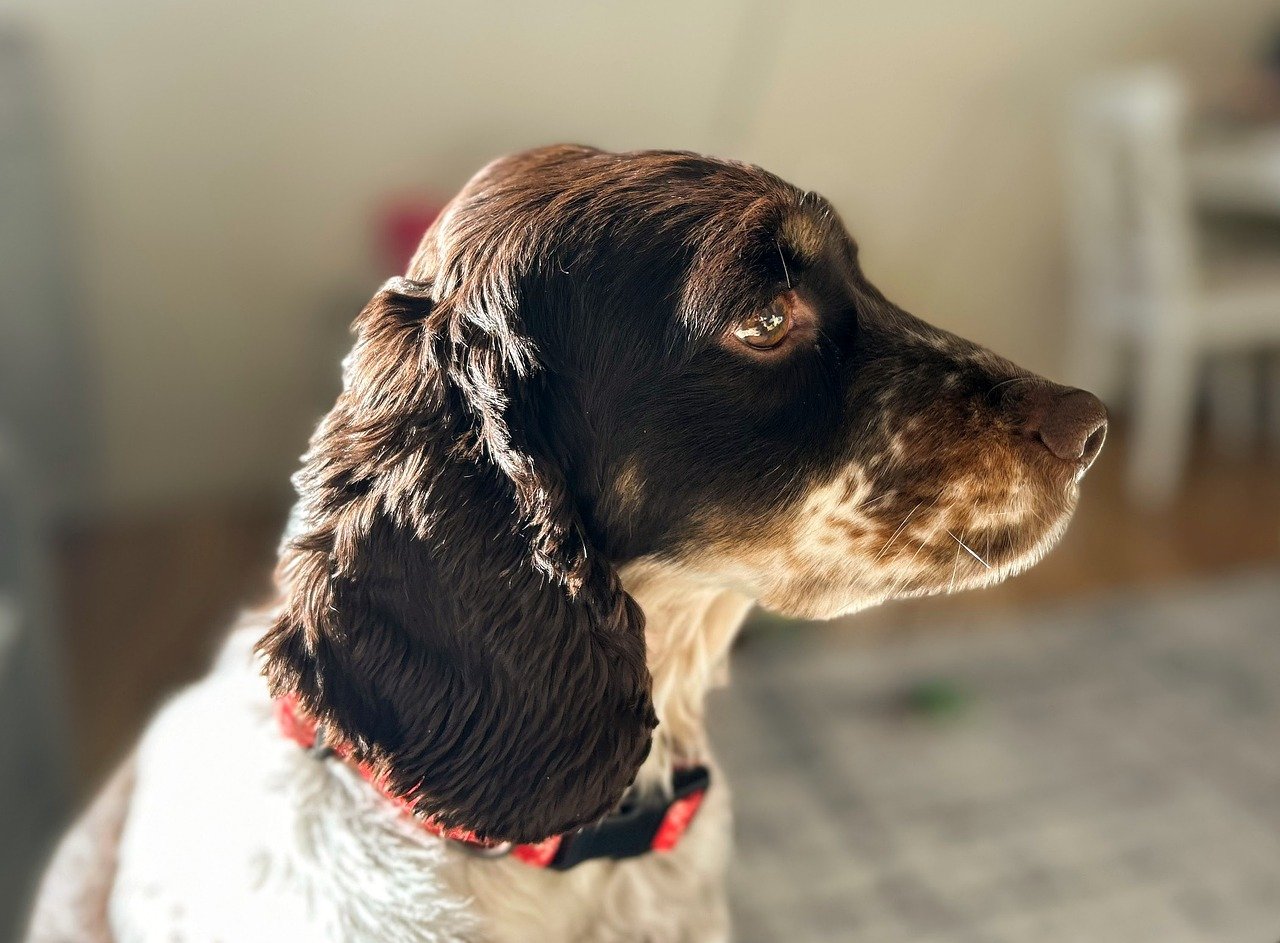
During the Flight
Keeping your pet calm during a flight is not just about the pre-flight preparations; it’s also about how you manage their comfort and anxiety while airborne. The moment you step into the airport, the hustle and bustle can be overwhelming for both you and your furry friend. It’s crucial to stay attentive to their needs and provide reassurance throughout the journey. Imagine your pet feeling like they’re on a rollercoaster while you’re just trying to enjoy the ride! With a little effort, you can help them feel secure and relaxed.
One of the first things to consider is the environment of the airplane. The cabin can be noisy and filled with unfamiliar smells, which may cause your pet to feel anxious. To combat this, you can use various calming aids that are specifically designed to soothe pets during travel. These can include pheromone sprays, calming collars, or even treats infused with natural ingredients like chamomile or valerian root. Be sure to test these aids before the flight to see how your pet responds. Remember, what works for one pet might not work for another!
In addition to calming aids, maintaining your pet's hydration and comfort is essential during the flight. Make sure to provide them with water before boarding and consider bringing a travel-friendly water bottle or bowl that can easily fit in your carry-on. It’s important to offer them water during the flight, especially if it’s a long journey. You can gently encourage your pet to drink by using a familiar bowl or even your hands. Just like us, pets can get dehydrated, and staying hydrated can help reduce anxiety.
Another aspect to consider is the temperature in the cabin. Airplanes can sometimes get chilly, so it’s a good idea to have a cozy blanket or a piece of your clothing in the carrier. The familiar scent can be incredibly comforting for your pet. Think of it as wrapping them in a warm hug from home! Additionally, check on your pet periodically to ensure they are comfortable and not showing signs of distress. A quick reassuring word or gentle petting can go a long way in calming their nerves.
Lastly, don't forget to keep an eye on your pet's behavior. If you notice them becoming restless or anxious, try to distract them with a favorite toy or a tasty treat. Engaging them in a little play or offering a chew toy can help redirect their focus and alleviate some of their stress. Just like how we might distract ourselves from a long wait with a good book or music, pets can benefit from similar distractions.
- How can I tell if my pet is stressed during the flight? Look for signs such as excessive barking, whining, drooling, or attempts to escape the carrier. If your pet seems unusually quiet or is panting heavily, they may be feeling anxious.
- Can I give my pet medication for anxiety during the flight? Yes, but it’s essential to consult your veterinarian beforehand. They can recommend safe options and dosages tailored to your pet's specific needs.
- What should I do if my pet refuses to drink water during the flight? Try offering water using a syringe or a small dish. If they still refuse, ensure they are well-hydrated before the flight, and monitor them closely for any signs of dehydration.
Calming Aids and Techniques
When it comes to flying with your furry friend, ensuring their comfort is paramount. One effective way to achieve this is by utilizing calming aids and techniques that can help soothe their anxiety during the flight. Think of these aids as your pet's little safety net, providing them with the reassurance they need when the world around them gets a bit too chaotic.
One popular option is the use of pheromone sprays or diffusers, which release calming scents that mimic natural pheromones. These products can create a sense of familiarity and relaxation for your pet, helping to ease their nerves. You can apply the spray to their carrier or use a diffuser in the area where they’ll be resting. It’s a bit like wrapping them in a warm, comforting blanket of smells!
Another method is the incorporation of natural calming treats. These treats often contain ingredients like chamomile, valerian root, or L-theanine, which are known for their soothing properties. They act much like a calming cup of tea for your pet—great for taking the edge off before and during the flight. Just be sure to test these treats at home first to see how your pet reacts, as every animal is unique.
If your pet's anxiety is particularly severe, consulting with your veterinarian about medications may be a wise choice. They can prescribe anti-anxiety medications that can be administered prior to travel. It's essential to discuss this option well in advance of your flight, as you’ll want to ensure the medication works effectively without causing drowsiness or adverse reactions. Think of it as a safety measure, much like having a seatbelt on during a car ride.
In addition to these aids, consider employing techniques to keep your pet calm. For instance, practicing desensitization can help. This involves gradually exposing your pet to the carrier and the sounds of travel. Start by letting them explore the carrier at home, rewarding them with treats and praise to create positive associations. Over time, you can simulate the environment of a flight by taking short car rides or visiting busy places. This technique works wonders, much like training for a big game—practice makes perfect!
Additionally, bringing along a favorite toy or blanket can provide a sense of security. Familiar items can work like a charm, reminding your pet of home and helping them feel less anxious. It’s a simple yet effective way to create a comforting environment amidst the hustle and bustle of travel.
Ultimately, the key to keeping your pet calm during a flight lies in a combination of these aids and techniques. By preparing ahead of time and being attentive to their needs, you can transform a potentially stressful experience into a much more enjoyable journey for both you and your furry companion.
- What are pheromone sprays, and how do they work?
Pheromone sprays mimic the natural scents that animals produce to communicate comfort and safety. They can help reduce anxiety by creating a familiar environment for your pet. - Are natural calming treats safe for all pets?
While many natural calming treats are safe, it’s essential to check the ingredients and consult your veterinarian, especially if your pet has allergies or specific health concerns. - How long before the flight should I give my pet calming medication?
Always follow your veterinarian's advice, but typically, medications should be given about an hour before travel to allow time for them to take effect. - Can I use my pet's favorite toy during the flight?
Yes! Bringing along a favorite toy or blanket can provide comfort and familiarity, helping to ease your pet's anxiety during the flight.
Maintaining Comfort and Hydration
When it comes to keeping your furry friend calm during a long flight, is absolutely essential. Imagine being stuck in a cramped space for hours without a sip of water or a cozy spot to curl up. That’s how your pet might feel if you don’t take the right steps to ensure their well-being. First and foremost, it’s crucial to provide your pet with access to water. Most airlines allow you to bring a small, spill-proof water bottle or bowl. Make sure to fill it up before the flight and check that it’s securely fastened to prevent any mess. A hydrated pet is a happy pet, and it can also help reduce anxiety levels.
In addition to hydration, think about your pet’s comfort. A familiar blanket or toy can work wonders in creating a sense of security. Just like a child might clutch their favorite stuffed animal during a stressful situation, your pet can benefit from the same comfort. Place these items in their carrier to help them feel more at home. You might also want to consider using a soft, breathable blanket that not only provides warmth but also absorbs any spills or accidents during the flight.
Temperature is another factor that can affect your pet's comfort. The airplane cabin can sometimes feel like a freezer or a sauna, depending on the airline's settings. Dress your pet in a light, breathable pet sweater if you anticipate cooler temperatures, or ensure they have a cool spot to lay if it’s warm. Always check with the airline about their temperature policies to ensure your pet stays comfortable throughout the journey.
Furthermore, during the flight, be attentive to your pet’s needs. If they seem restless, gently speak to them or offer a treat to distract them. You might even want to schedule a short break during layovers to let them stretch their legs and relieve themselves. This can make a world of difference in their overall comfort. Remember, a calm pet makes for a more enjoyable flight for both of you!
- How often should I offer water to my pet during the flight?
It's best to offer water every couple of hours, but check with your airline for specific regulations. - Can I give my pet a sedative for the flight?
Always consult your veterinarian before administering any medication to ensure it’s safe and appropriate for your pet. - What should I do if my pet becomes anxious during the flight?
Try to soothe them with your voice, offer treats, or use calming aids like pheromone sprays. - Is it okay to feed my pet before the flight?
Yes, but avoid heavy meals right before travel to prevent nausea. A light snack is usually best.
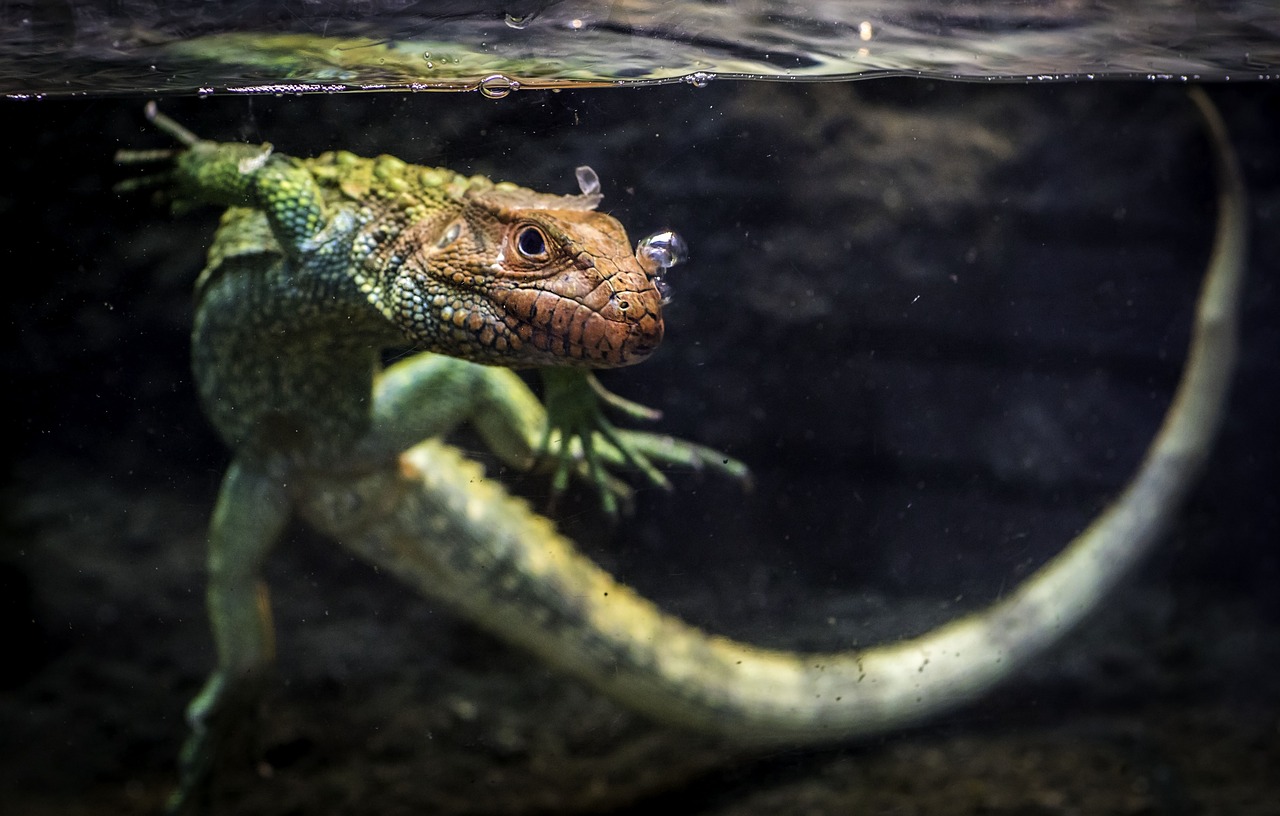
Post-Flight Care
After a long flight, your pet may feel a bit disoriented and anxious, just like you might after a long journey. It’s essential to provide them with the right care to help them readjust to their new environment. First and foremost, give your furry friend some time to decompress. Don’t rush them out of the carrier immediately; instead, let them take their time to emerge and explore their surroundings at their own pace. This gentle approach can help ease their transition and make them feel more secure.
Once your pet has settled down a bit, ensure they are hydrated and have access to fresh water. Traveling can be dehydrating, and your pet might not have had the chance to drink during the flight. Offer them water gradually, as they may be a bit overwhelmed. Additionally, check for any signs of distress or discomfort. Common symptoms include excessive panting, whining, or hiding. If you notice anything unusual, it might be worth consulting a veterinarian to rule out any underlying issues.
Next, consider providing a familiar blanket or toy from home. Having a piece of their own environment can be incredibly comforting for pets. It’s like giving them a little slice of home in a new place. You might also want to set up a designated area where your pet can feel safe and relaxed. This space should be quiet, away from the hustle and bustle of your new surroundings, and stocked with their favorite items.
Another important aspect of post-flight care is allowing your pet to stretch their legs. If you’ve arrived at a pet-friendly location, take them out for a short walk or playtime in a safe area. This not only helps them release pent-up energy but also gives them a chance to explore their new environment. Just like humans, pets need a bit of physical activity to shake off the travel fatigue.
Lastly, keep an eye on their eating habits. Some pets might be hesitant to eat immediately after a flight. If they seem disinterested in food, don’t worry too much; give them some time. However, if they refuse to eat for more than 24 hours, it’s advisable to consult a veterinarian. To help encourage them, you can try offering their favorite treats or a small amount of their regular food.
- How long does it take for a pet to adjust after a long flight?
Adjustment periods can vary. Some pets may bounce back within a few hours, while others might take a few days to fully acclimate to their new surroundings.
- What should I do if my pet seems overly stressed after the flight?
If your pet shows signs of extreme stress, such as excessive barking, hiding, or refusal to eat, consult a veterinarian for advice on how to manage their anxiety.
- Is it normal for pets to lose their appetite after traveling?
Yes, it’s common for pets to be a bit off their food after a stressful experience like traveling. Just give them some time, and they will likely return to their normal eating habits.
Frequently Asked Questions
- What are the signs of pet anxiety during travel?
Pets may show signs of anxiety in various ways, including excessive barking, whining, pacing, or hiding. They might also exhibit changes in appetite or become unusually clingy. Recognizing these behaviors early can help you address their needs effectively.
- How can I prepare my pet for a long flight?
Preparing your pet involves several key steps. Start by acclimating them to their travel carrier well in advance. Make sure they are comfortable with the space by allowing them to explore it at home. Additionally, consult with your veterinarian for advice tailored to your pet's specific needs.
- What should I consider when choosing a carrier?
When selecting a carrier, consider the size and ventilation. Your pet should be able to stand, turn around, and lie down comfortably. Look for carriers that meet airline regulations and ensure they have adequate airflow to keep your pet comfortable throughout the flight.
- Can calming aids help my pet during the flight?
Yes! Calming aids such as pheromone sprays, anxiety wraps, or even certain treats can help soothe your pet. In some cases, your veterinarian may recommend medication to help manage anxiety. It's always best to discuss options with a professional before your trip.
- How can I ensure my pet stays hydrated during the flight?
To keep your pet hydrated, consider using a spill-proof water bottle attached to the inside of the carrier. You can also offer water before the flight and ensure they have access to it during layovers. Just be mindful not to overhydrate to avoid accidents.
- What should I do after landing to help my pet readjust?
Once you arrive at your destination, give your pet some time to acclimate to their new surroundings. Provide a quiet space for them to relax and offer plenty of water and food. A short walk can also help them stretch their legs and relieve stress after the flight.

